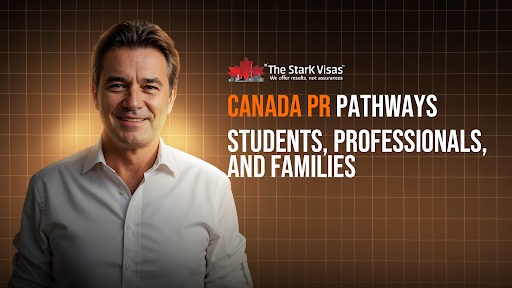
Canada PR Pathways for Students, Professionals, and Families
Canada PR sounds impressive, but the pathways can be a puzzle.
Students ask about PR after graduation, professionals stress about Express Entry and CRS points, and families wonder how to bring their loved ones along.
Don’t panic, we’ve got the ultimate guide. Study-to-PR programs, Express Entry advice, and family sponsorship options, here’s your easy guide to Canada PR for every kind of applicant.
Get expert guidance with a free Canada PR assessment from Stark Visas!
1. Canada PR for Students: From Study Visa to Permanent Residency
Studying in Canada isn’t just about hitting the books and enjoying maple syrup pancakes (though that’s a huge perk). For international students, Canada offers a clear pathway to PR, making your study visa much more than just a temporary stay.
Step 1: Choose the Right Program
Not every course gets you closer to PR. Programs like STEM, healthcare, business, and engineering often have higher chances of helping you qualify for permanent residency.
Step 2: Post-Graduation Work Permit (PGWP)
Once you graduate, apply for a PGWP, which allows you to work in Canada for up to 3 years. Why is this important? Because work experience in Canada boosts your CRS score, which is crucial for Express Entry.
Step 3: Express Entry for Students
Most international students opt for Express Entry under the Canadian Experience Class (CEC). Your Canadian degree, combined with local work experience, yields higher CRS points and a better chance of receiving an invitation to apply.
Step 4: Provincial Nominee Program (PNP)
Some provinces have dedicated streams for international graduates. For example:
Ontario: International Student Stream
British Columbia: International Graduate Stream
Provinces basically “nominate” you, giving you extra points in Express Entry, making your PR almost guaranteed if you meet the criteria.
If you want to maximize your PR chances after studying in Canada, Stark Visas can guide you through PNP & Express Entry smoothly.
2. Canada PR for Professionals: Skilled Worker Pathways
For working professionals, Canada PR can feel like hitting a jackpot, but only if you pick the right pathway. Let’s break it down.
Express Entry: The Fast Lane
Express Entry is the most popular pathway for skilled workers. It has three categories:
1. Federal Skilled Worker Program (FSWP) – For people with solid work experience, education, and language skills.
2. Federal Skilled Trades Program (FSTP) – For trade workers like electricians, welders, and plumbers.
3. Canadian Experience Class (CEC) – Already have work experience in Canada? This one’s for you.
Step 1: Calculate Your CRS Score
Your Comprehensive Ranking System (CRS) score determines your chances in the Express Entry program. Factors include:
- Age
- Education
- Work experience
- Language proficiency (IELTS / CELPIP)
- Job offer (optional but helpful)
Step 2: Improve Your CRS
Here’s where many professionals go wrong. You can increase CRS points by:
Getting a job offer in Canada
Completing additional language tests
Using PNPs to gain extra points
Step 3: Invitation to Apply (ITA)
Once your CRS score is high enough, IRCC sends an ITA (Invitation to Apply) for PR. After submitting your documents and passing medical & background checks, you’re officially on your way to permanent residency.
If you don’t want to risk losing points or missing deadlines, then you must have us by your side.
3. Canada PR for Families
Canada isn’t just for solo adventurers; it’s also one of the most family-friendly immigration destinations. If you want to bring your spouse, children, or even parents, family sponsorship is the ideal option.
Who Can Sponsor Whom?
Spouse/Common-law partner – Apply under Spousal Sponsorship.
Dependent children – Automatically eligible if under 22 and unmarried.
Parents and grandparents – Special sponsorship programs available annually.
Key Requirements
- Sponsors must be Canadian citizens or PR holders.
- Financial proof is required to demonstrate that you can support your family members.
- Background and medical checks are mandatory for all applicants.
- Family Sponsorship vs Express Entry
- Family sponsorship: Direct PR for eligible relatives, no CRS points needed.
Express Entry works better if family members are accompanying you as dependents, but CRS points still matter for the primary applicant.
Provincial Nominee Programs (PNPs):
This is Extra Points, Extra Advantage thing! Here is what I mean:
Whether you’re a student, professional, or family applicant, PNPs are the real game-changers. Provinces like Ontario, British Columbia, Saskatchewan, and Alberta nominate applicants based on their local labor market needs.
Why are PNP’s a Shortcut to PR?
- Extra 600 CRS points if nominated.
- Specialized streams for students, skilled workers, and business applicants
- Some provinces prioritize applicants with job offers, Canadian education, or specific skills
Don’t know which PNP is best for you? Reach out to us today to receive a free assessment, and we’ll help you choose the fastest PR pathway.
Tips to Maximize Your Chances for Canada PR
Here’s a list to help you improve your PR application chances:
Start Early: Don’t wait until graduation or a job change; plan your PR pathway as soon as possible.
Language Scores Matter: IELTS or CELPIP scores heavily influence CRS points.
Work Experience Counts: Canadian work experience gives bonus points in CEC.
Use PNPs Strategically: Some provinces prioritize specific occupations and check regularly.
Keep Your Documents Ready: Police clearances, medical records, and educational credentials can take time.
FAQs About Canada PR Pathways
1. Can international students get a Canada PR without a job offer?
Yes, through CEC if you have Canadian work experience, or via PNP streams for international graduates.
2. How long does a Canada PR take for professionals?
Typically 6–12 months via Express Entry if CRS points are strong, longer if applying through PNP without an ITA.
3. Can my spouse apply along with me?
Absolutely! Dependents can be included in your PR application, and you can also sponsor them separately later.
4. Do I need IELTS for Canada PR?
For Express Entry, yes. Some PNP streams may accept alternative language tests or exemptions.
5 Can I switch from a student visa to a PR?
Yes! Most international students follow the PGWP → CEC → Express Entry → PR route.
Final Thoughts
Canada PR is simple and relatively easy to achieve if you know which path suits you best. Students can leverage Canadian education and PGWP. Professionals can optimize CRS scores via Express Entry and PNP. Families can reunite under sponsorship programs.
But wait, I warn you! One wrong step can delay or even ruin your PR dreams. Therefore, it is advisable to choose Stark Visas if you don't want your visa application to be rejected.
Don’t wait! Get your free Canada PR eligibility assessment with Stark Visas today and start your journey the smart way.


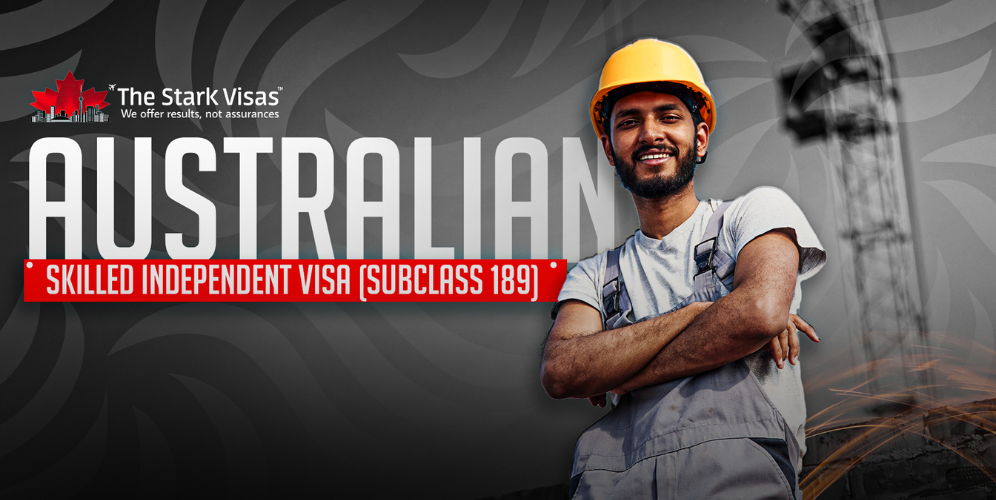


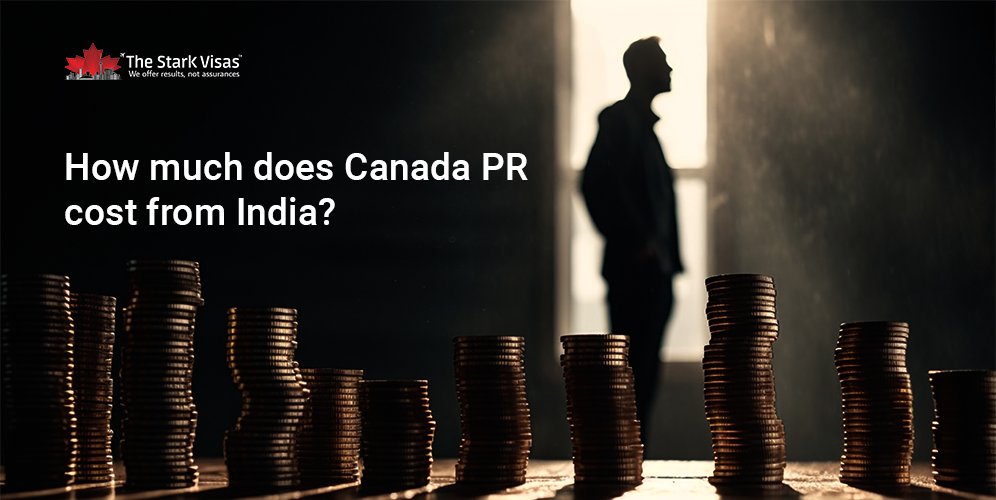



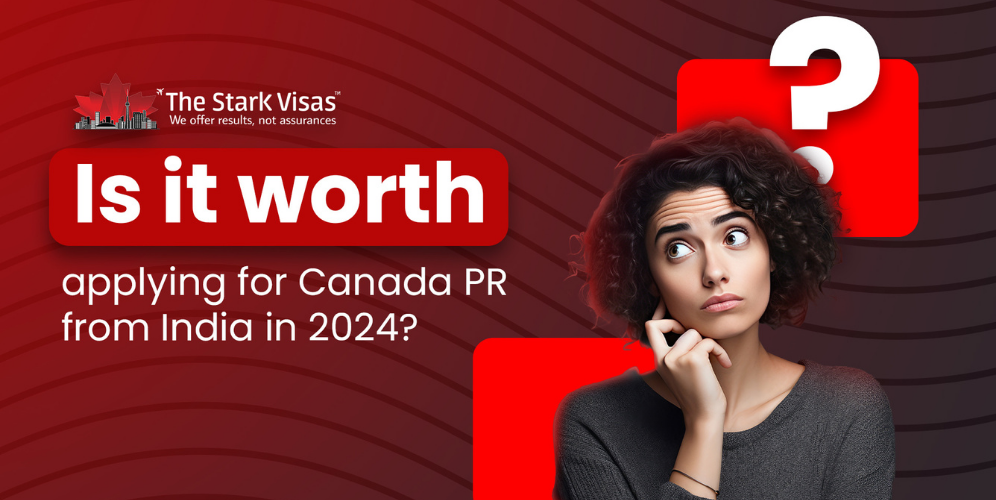
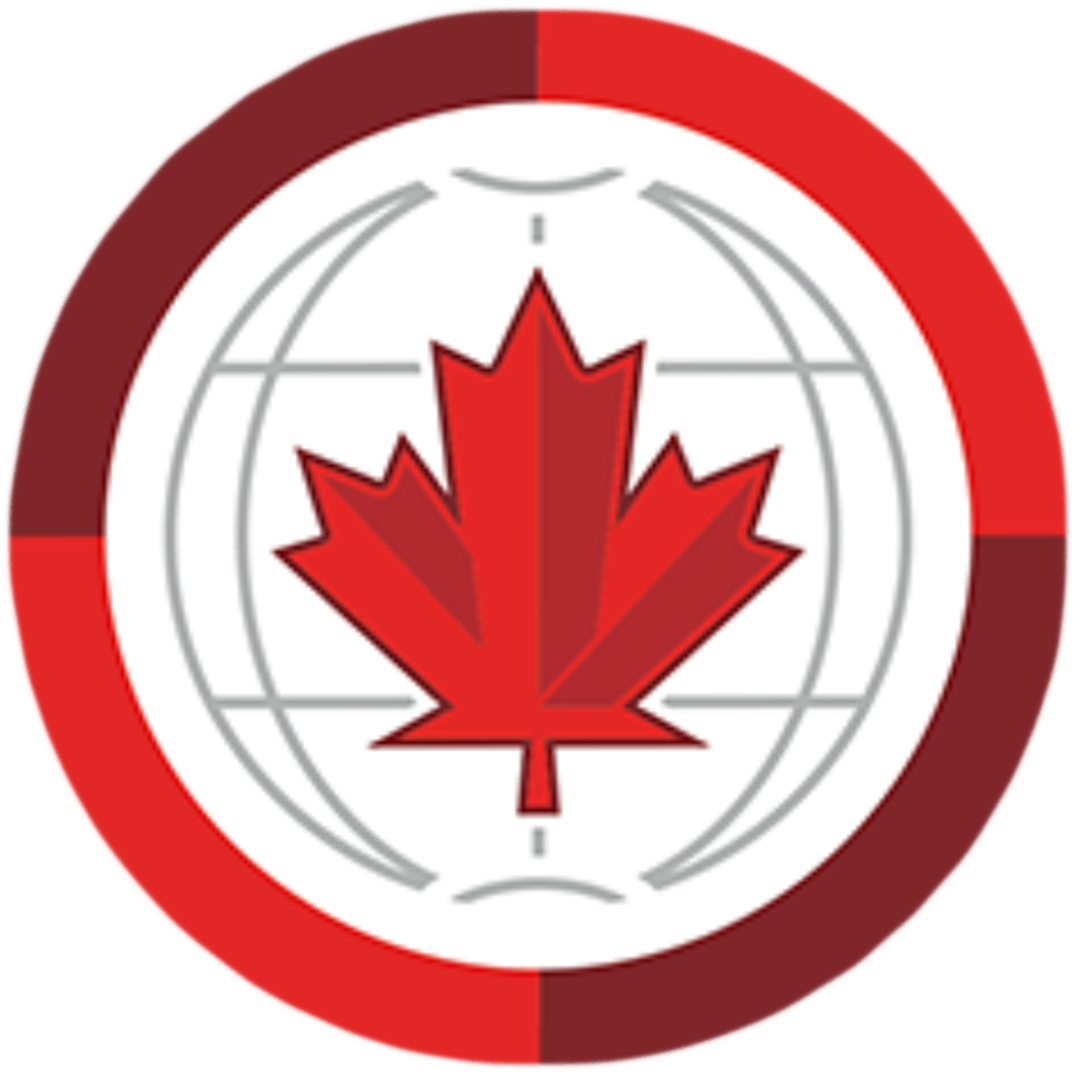 GET FREE COUNSELLING
GET FREE COUNSELLING
Comments